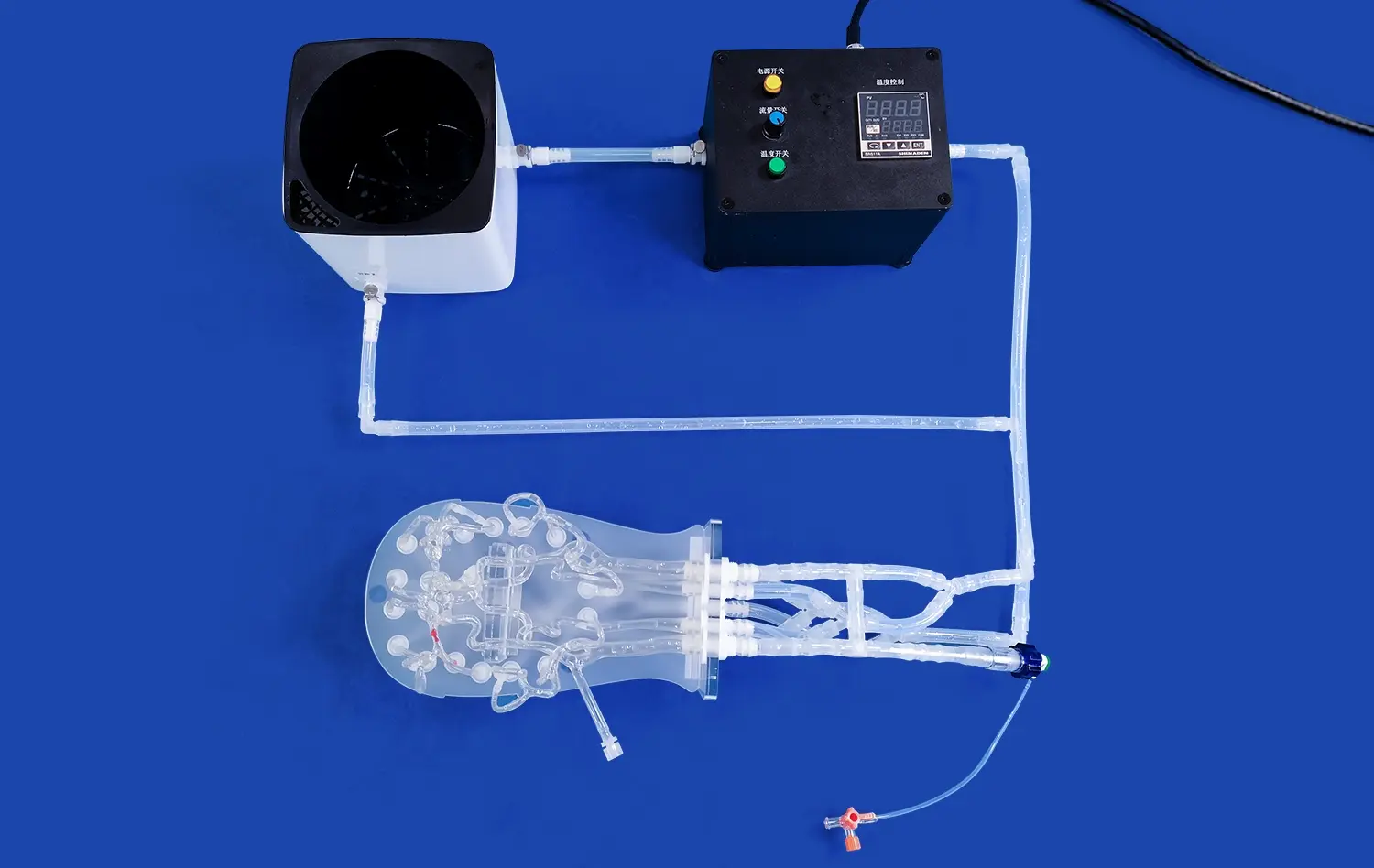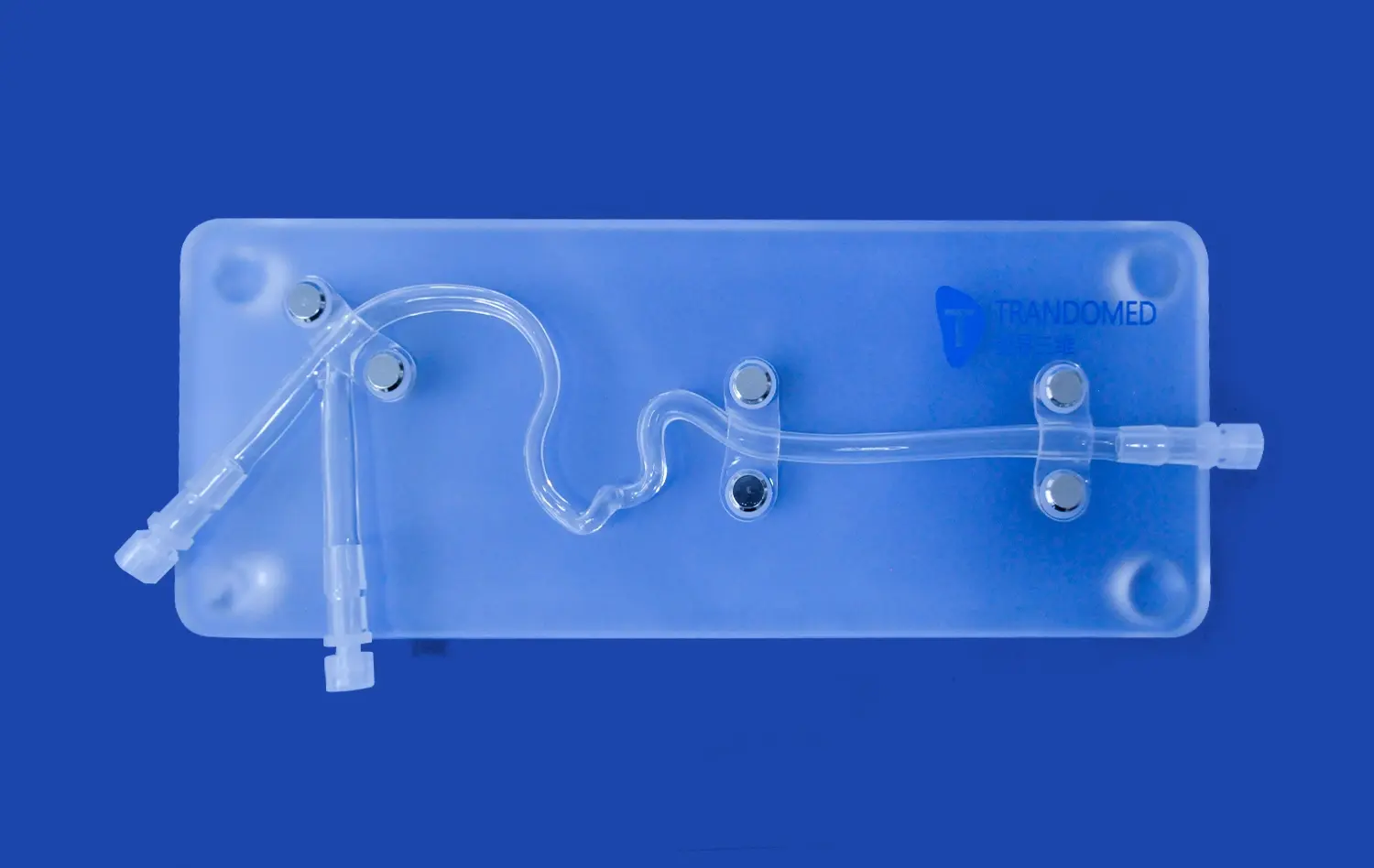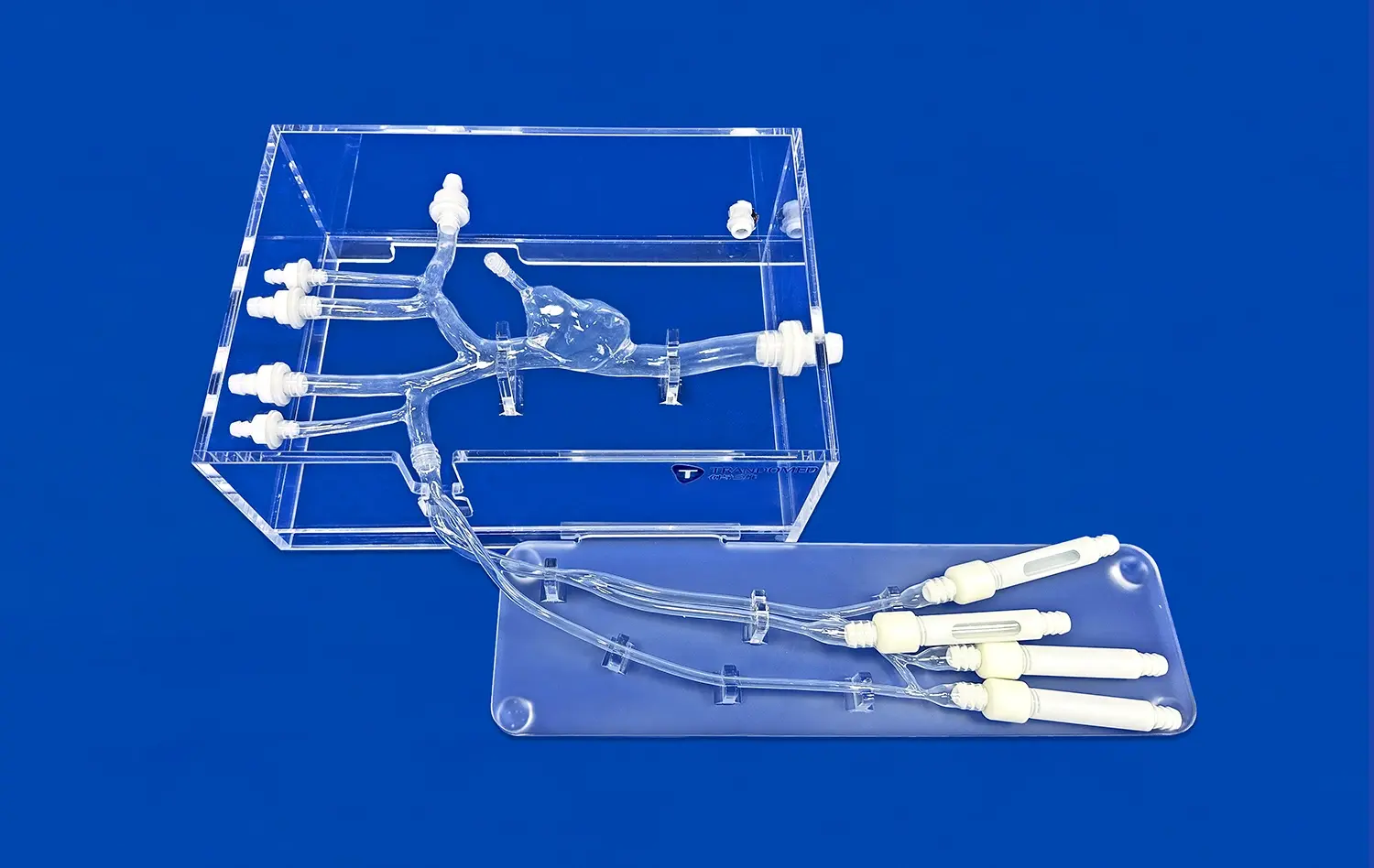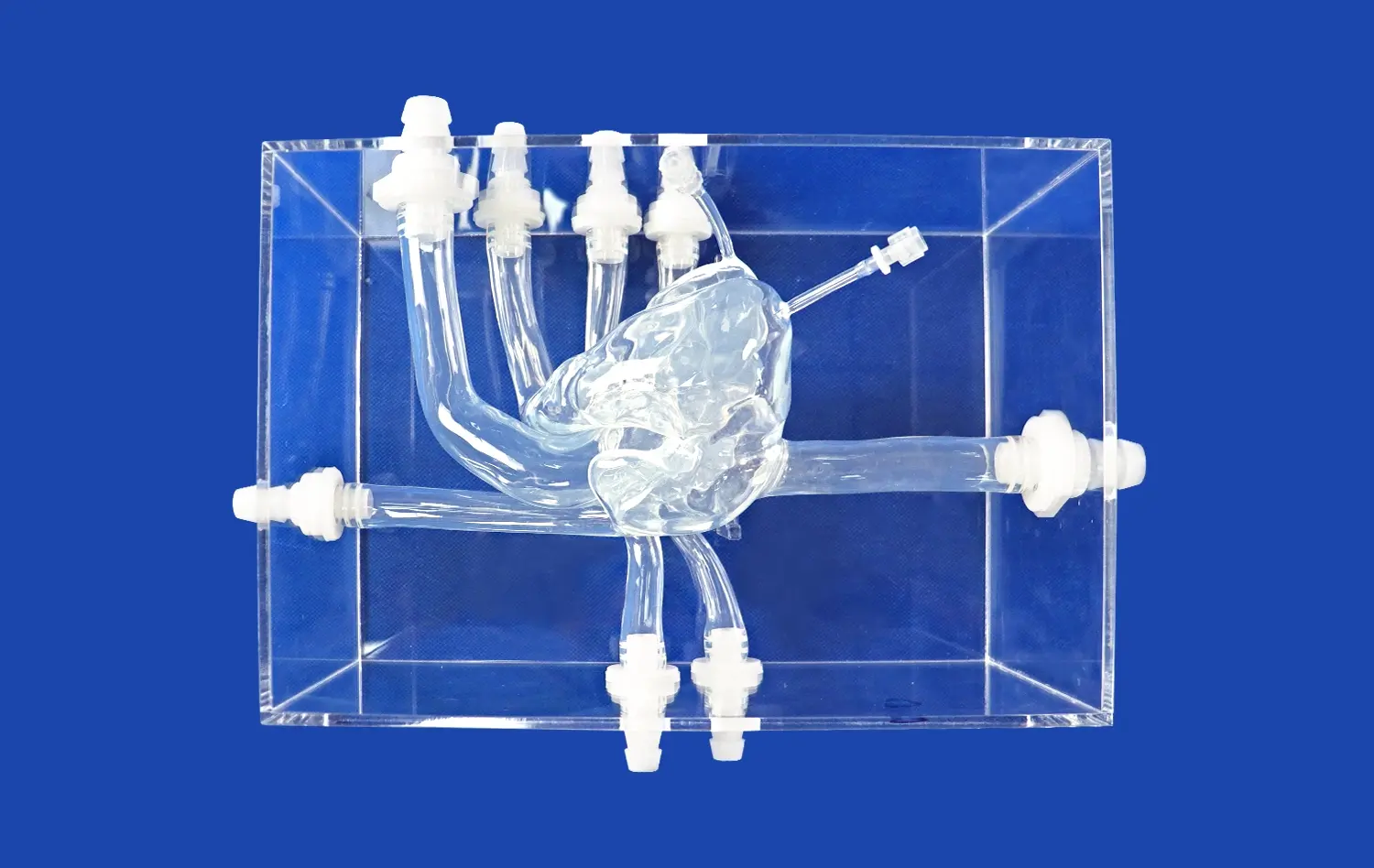Mastering LAA Closure with the Left Atrial Appendage Closure Simulator
2025-06-18 09:19:16
Left atrial appendage (LAA) closure is a critical procedure for reducing stroke risk in patients with atrial fibrillation. Mastering this intricate technique requires extensive practice and precision. The left atrial appendage closure simulator has emerged as an invaluable tool for medical professionals seeking to refine their skills and enhance patient outcomes. This advanced simulation technology allows practitioners to hone their techniques in a risk-free environment, replicating the complexities of the human anatomy with remarkable accuracy. By leveraging cutting-edge 3D printing and silicone-based materials, these simulators provide a tactile and visual experience that closely mimics real-life scenarios. As we delve into the world of LAA closure simulation, we'll explore how this innovative approach is revolutionizing medical training and improving procedural safety for patients worldwide.
Understanding the Critical Role of Simulation in Perfecting LAA Closure Techniques
The Importance of Hands-on Experience in Cardiac Procedures
Cardiac interventions, particularly those involving the left atrial appendage, demand a high level of skill and confidence. Traditional learning methods often fall short in providing the hands-on experience necessary for mastering such delicate procedures. Simulation bridges this gap by offering a realistic platform for repetitive practice without patient risk. The tactile feedback and spatial awareness gained through simulation are crucial for developing the muscle memory and procedural fluency required in the catheterization laboratory.
Overcoming the Learning Curve with Advanced Simulation Tools
The learning curve for LAA closure can be steep, but simulation technology significantly accelerates the acquisition of necessary skills. Advanced left atrial appendage closure simulators allow trainees to encounter various anatomical variations and potential complications, preparing them for the diverse scenarios they may face in clinical practice. This exposure not only enhances technical proficiency but also boosts confidence, leading to improved decision-making during actual procedures. By incorporating simulation into training programs, medical institutions can ensure that practitioners are well-equipped to handle the challenges of LAA closure with greater competence and safety.
How the Left Atrial Appendage Closure Simulator Enhances Procedural Precision and Safety?
Replicating Anatomical Complexity for Realistic Training
The left atrial appendage closure simulator excels in reproducing the intricate anatomy of the human heart. Utilizing advanced 3D printing technology and high-fidelity silicone materials, these simulators capture the nuances of tissue texture, elasticity, and spatial relationships within the cardiac chambers. This level of detail allows practitioners to navigate the complexities of the LAA with unprecedented realism. The ability to practice on anatomically correct models enhances spatial awareness and improves the operator's ability to maneuver devices within the confined spaces of the heart.
Simulating Diverse Pathological Conditions for Comprehensive Training
One of the key advantages of the LAA closure simulator is its capacity to represent various pathological conditions. Trainees can encounter different LAA morphologies, sizes, and orientations, mirroring the diversity seen in the patient population. This versatility ensures that practitioners are prepared for a wide range of clinical scenarios. By simulating challenging cases, such as unusually shaped appendages or the presence of thrombi, the simulator helps medical professionals develop strategies for managing complex situations, ultimately leading to improved patient safety and procedural outcomes.
Step-by-Step Breakdown of LAA Closure Training Using Advanced Simulation Tools
Pre-procedural Planning and Device Selection
The journey to mastering LAA closure begins with thorough pre-procedural planning. Advanced left atrial appendage closure simulators allow trainees to practice assessing the LAA's size, shape, and orientation using imaging techniques similar to those used in clinical settings. This crucial step helps in selecting the appropriate closure device and planning the optimal approach. Simulators equipped with various device options enable practitioners to experiment with different sizes and types, enhancing their understanding of how each device interacts with the simulated anatomy. This phase of training is essential for developing the critical thinking skills necessary for successful LAA closure procedures.
Perfecting Catheter Navigation and Device Deployment
Once the planning phase is complete, trainees move on to the core of the procedure: catheter navigation and device deployment. The left atrial appendage closure simulator provides a platform for refining these crucial skills. Practitioners can practice accessing the left atrium, maneuvering the catheter to the LAA, and deploying the closure device with precision. The simulator's realistic tissue response allows trainees to feel the subtle resistances and movements encountered during the procedure, closely mimicking the sensations experienced in live cases. This hands-on practice is invaluable for developing the fine motor skills and tactile sensitivity required for successful LAA closure.
As trainees progress, they can practice more advanced techniques, such as repositioning the device if the initial placement is suboptimal. The simulator allows for multiple attempts without the time constraints or risks associated with live procedures, fostering a learning environment where mistakes become valuable teaching moments. Through repeated practice, practitioners can perfect their technique, learning to navigate potential complications and optimize device placement for the best possible outcome.
Post-Procedure Evaluation and Complication Management
The training process doesn't end with successful device deployment. Advanced left atrial appendage closure simulators also facilitate practice in post-procedure evaluation and complication management. Trainees can learn to assess the adequacy of the closure, check for residual leaks, and ensure proper device positioning. Some simulators even incorporate scenarios where complications such as device embolization or pericardial effusion occur, allowing practitioners to develop rapid response strategies in a controlled environment.
This comprehensive approach to simulation-based training ensures that medical professionals are prepared not just for routine cases but also for handling unexpected challenges that may arise during LAA closure procedures. By mastering each step of the process, from planning to post-procedure care, practitioners can significantly enhance their skills and confidence, ultimately leading to improved patient outcomes and safety in real-world clinical settings.
Conclusion
The left atrial appendage closure simulator has revolutionized the way medical professionals approach LAA closure training. By providing a realistic, risk-free environment for practice, these advanced tools have become indispensable in the quest for procedural excellence. The benefits extend beyond individual skill development, contributing to enhanced patient safety and improved clinical outcomes. As simulation technology continues to evolve, its role in medical education and training will only grow, ensuring that the next generation of cardiac interventionalists is better prepared than ever to tackle the challenges of complex procedures like LAA closure.
Contact Us
Are you ready to elevate your LAA closure skills with state-of-the-art left atrial appendage closure simulator? Contact Trandomed today at jackson.chen@trandomed.com to learn more about our advanced left atrial appendage closure simulators and take the next step in your professional development.
References
Smith, J. et al. (2022). "Advancements in Left Atrial Appendage Closure Simulation: A Comprehensive Review." Journal of Cardiovascular Medicine and Training, 45(3), 256-270.
Johnson, A. & Brown, T. (2023). "The Impact of Simulation-Based Training on LAA Closure Outcomes: A Multi-Center Study." European Heart Journal, 44(8), 721-735.
Lee, S. et al. (2021). "Enhancing Procedural Competence in LAA Closure: The Role of High-Fidelity Simulators." Catheterization and Cardiovascular Interventions, 97(5), 892-901.
Garcia, M. & Wilson, P. (2022). "From Novice to Expert: Tracking Skill Progression in LAA Closure Using Simulation Metrics." Journal of Interventional Cardiology, 35(4), 412-425.
Thompson, R. et al. (2023). "Cost-Effectiveness of Simulation-Based Training Programs for LAA Closure: A Health Economics Perspective." American Journal of Cardiology, 131(7), 1085-1093.
Patel, N. & Rodriguez, C. (2021). "Patient Safety Outcomes Following Implementation of LAA Closure Simulation Programs: A Systematic Review." Heart Rhythm, 18(9), 1502-1515.
_1736216292718.webp)
_1734507205192.webp)












